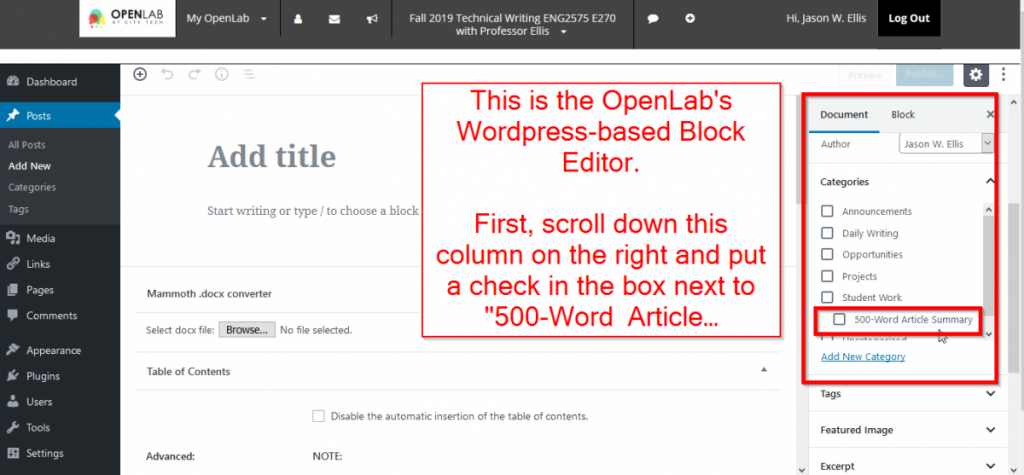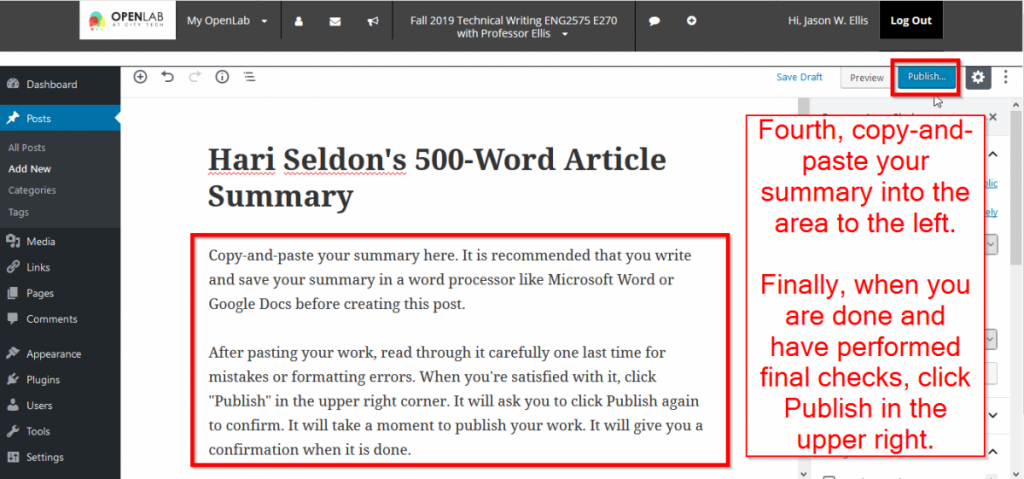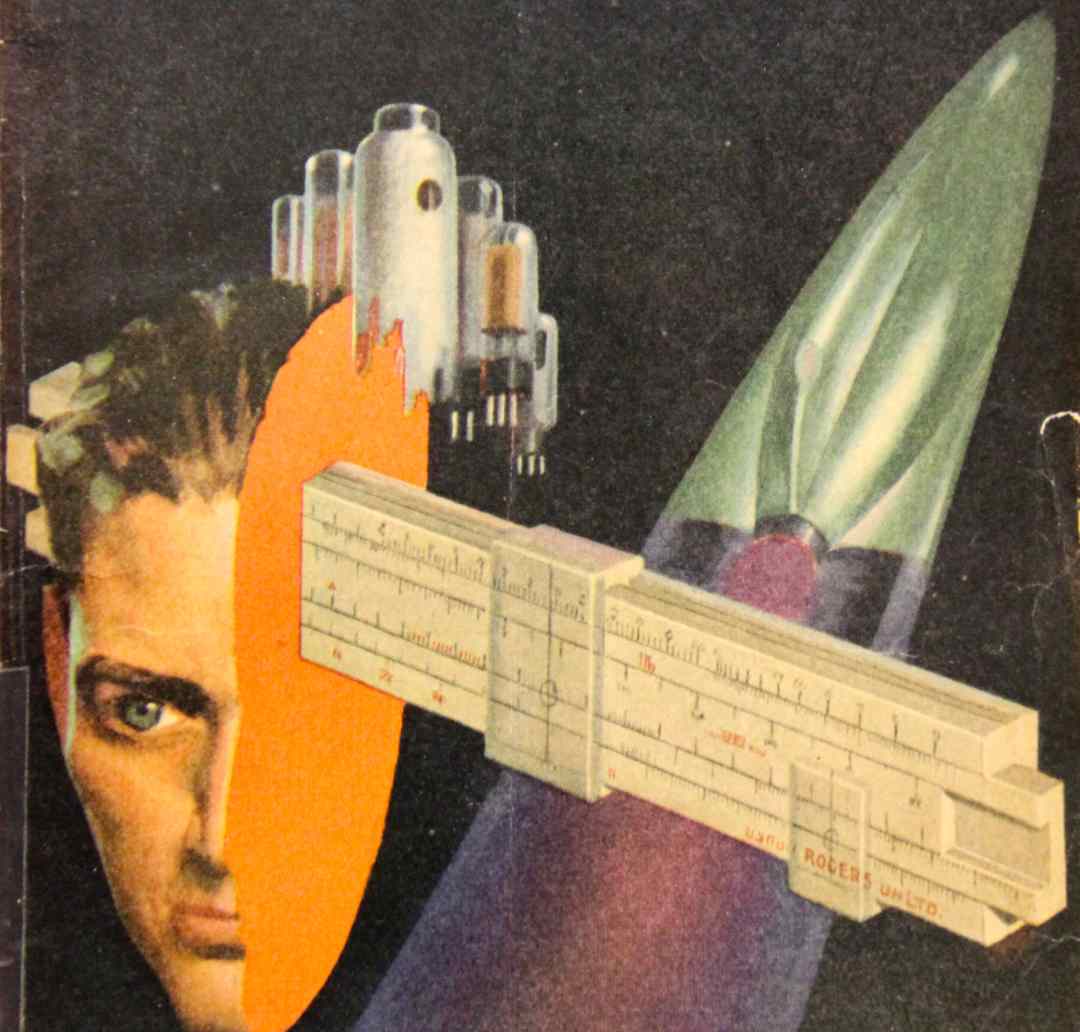Your first project in our class is due before class next week. This post describes the overall deliverable (finished product) and how to submit your work for credit.
The audience of your summary would be peers–people with a similar education and professional experience. Jargon is allowed, but acronyms should be telescoped in proceeding parentheses, such as RTFM (Read the F—g Manual) or TANSTAAFL (There Ain’t No Such Thing as a Free Lunch).
The layout for your 500-Word Summary document should be as follows:
TO: Prof. Jason W. Ellis
FROM: Your Name
DATE: Due Date
SUBJECT: 500-Word Summary of Author’s-Last-Name’s “Title of Article”
Begin your 500-word article summary with a paragraph that we can call the executive summary or abstract. This paragraph is, in a sense, the summary of your summary. It should: 1) Identify the author, title of article, and the title of the journal in which it was published, 2) what is the main argument or point of the article, and 3) what are the relevant supporting points or evidence that you will discuss in your summary (think of this last sentence as a road map for the paragraphs that follow).
The paragraphs that follow should elaborate on the details that the author uses to support their argument. This might include background and context-specific information that is needed to understand the argument, examples that support the main point of the article, data that supports the argument, etc. You may use your knowledge to discuss the article’s argument and supporting evidence, but you do not need to cite any outside material. Cite the article being summarized only, please.
In your summary’s discussion section, you need to include at least one quote and parenthetical citation like we used in today’s Daily Writing assignment.
In the concluding paragraph of our summary, you should elaborate on whether you found the article persuasive or not. Explain why or why not the article is convincing. Consider the quality of the examples, counterarguments that you might imagine, counterexamples that you know about, and the authority of the author(s)–if you consider this last point you will need to look them up to learn more about their background and expertise.
Close your 500-word summary with a section titled “References” followed on the next line by an APA-formatted bibliographic citation of the article that you are summarizing. See below for an example of your document’s layout, and then see the end of this post for instructions about submitting your work.
Your completed 500-Word Article Summary should have a layout like this:
ellis-jason-500-word-summary-assignment-exampleInstead of asking you to submit your work as a Word docx file as originally described on the syllabus, I would like everyone to create a new Post on our OpenLab site to submit their 500-Word Summary. This puts your work on OpenLab so that it is public-facing and easier for you to assemble into your Portfolio. Follow the steps below for posting your work on our OpenLab site.




On the final step, you will need to click Publish in the upper right corner. OpenLab will ask you to confirm that you are ready to publish by pressing Publish again. After a moment, it will give you a confirmation that your post has been published.
To confirm that your work has been published, click on “Fall 2019 Technical Writing ENG2575 E270 with Professor Ellis” at the top of the page to return to our site. Then, look at the left menu and click “Student Work” to expand that menu item, and then, click “500-Word Article Summary” to view all student-submitted work. Yours should be listed here. If you don’t see it, try submitting again. If you have any questions, email Prof. Ellis (jellis at citytech.cuny.edu).
Submit your summary before arriving to class on Tuesday, Sept. 17.







